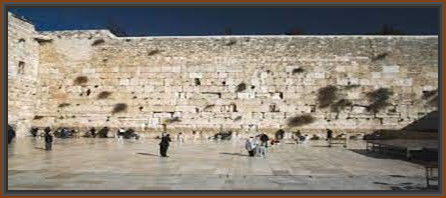
 |
July 2, 2021 Conundrums of Convention
Dear Holy Friends, I hope this correspondence finds you doing well and enjoying the beautiful summer weather. We are presently in the midst of a time-period on the Jewish calendar commonly referred to as “The Three Weeks.” This period references the connection between two commonly observed fast days, Shiva Asar B’Tammuz (the 17th of Tammuz) and Tisha B’Av (the 9th of Av). Shiva Asar B’Tammuz is a minor fast day (sunrise to sunset) that commemorates the breaching of the walls of Jerusalem prior to the destruction of the Temple. Tisha B’Av, on the other hand, is a major fast day (sunset to sunset), which recalls the actual day of the destruction of both the first and second Temples (586 BCE and 70CE). This past Sunday, I participated in a morning minyan at a local orthodox shul. As in many other shuls, there is a custom on the 17th of Tammuz to recite special penitential prayers referred to as Selichot. These prayers represent what I refer to as a “liturgical convention.” The recitation of these prayers and poems is predicated on the concept that the destruction occurred, in part, due to sins of the Jewish people. During the davening, I came across a piyyut (poem) that laments the destruction of the city and reads, ותבקע העיר יום גבר האויב , “On that day our enemies won and overtook the city.” While acknowledging the historical sentiment expressed by the author, I froze mid-sentence and could not bring myself to recite these words. Thank God, these days, Jerusalem is in Jewish hands! Thus, I could not bring myself to voice the potentiality that history would repeat itself. Rather, during the davening, I reflected on today’s living Holy City. The following is how I reflected upon the Jerusalem that I know. Jerusalem is Jewish. Jerusalem was founded as the City of David in 1010 BCE, yet there is evidence of settlements going back all the way to 4500 BCE. This means that Jewish people have continuously lived in Jerusalem for more than 3,000 years.  Today, Jerusalem continues to represent the heart of the Jewish people. It is our holiest city, a central focus of liturgy (referenced during the Amidah, Birkat HaMazon, weddings and funerals), a focus of the Bible (the name of the city is mentioned over 900 times in the Tanach), and the center of Torah study and Jewish spirituality. In fact, over one million people visit the Kotel each year. Today, Jerusalem is a bastion of religious and political freedom. There are more than 50 Christian churches, 33 Muslim mosques, and 300 Jewish synagogues in the city and the Knesset, Israel’s legislative body, which represents the fulfillment of democracy, is in Jerusalem. Today, Jerusalem represents historical scholarship. There are more than 60 museums in Jerusalem including The Israel Museum, home to the Dead Sea Scrolls and some of the oldest Biblical manuscripts, which stands in the heart of the city, and Yad Vashem, the Holocaust Museum and archive, which houses more than 450,000 photographs and 179 million pages of documents, that recalls the darkest period of Jewish history. Finally, there are more than 1,500 public parks and gardens in Jerusalem, a miraculous amount of green space in the middle of the desert! So, while I acknowledge this solemn time of year and respect that some may wish to focus on a liturgical convention of “Jerusalem besieged,” I will take a different, more positive and uplifting approach. Rather, I will choose to celebrate what I regard as one of the greatest miracles in our people’s experience, our rebuilding of the Jewish Jerusalem. Shabbat Shalom,
Rabbi Eric L. Wasser, EdD
|